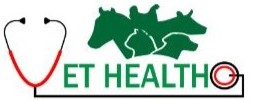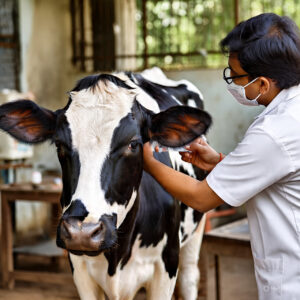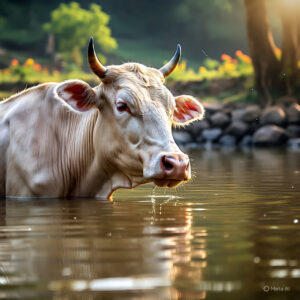Recognizing the signs of heat in cows is a crucial step in ensuring effective breeding. Farmers must observe specific behaviors that indicate estrus, such as standing heat and vocalization.
🔹 Introduction
Detecting heat in cows is essential for reproductive success. Farmers need to recognize the signs early. Missed heat leads to poor breeding results. Early detection ensures better fertility.
🔹 What Is Heat (Estrus) in Cows?
Heat or estrus is the period when a cow is ready to mate. It usually lasts 12 to 18 hours. Proper detection improves insemination timing. This increases pregnancy rates and overall farm productivity.
🔹 Behavioral Signs of Heat in Cows
Behavioral changes are the first indicators. Watch for these common signs:
1. Standing to be Mounted
The most reliable sign. A cow in heat stands still when another mounts her.
2. Mounting Others
Cows in heat often try to mount other cows, even if they are not in heat.
3. Restlessness
The cow moves more than usual. She walks constantly, sniffs others, and looks anxious.
4. Frequent Bellowing
A cow in heat may moo more often. The vocalizations are louder and more frequent.
5. Reduced Feed Intake
She may eat less. Her focus shifts to other cows and mating behavior.
6. Chin Resting
Cows in heat rest their chin on others. This action signals mounting intention.
🔹 Physical Signs of Heat in Cows
Watch the body closely. These physical changes occur:
1. Swollen Vulva
The vulva becomes enlarged and moist. It may appear red or puffy.
2. Clear Mucus Discharge
A stringy, transparent mucus appears from the vulva. This is a classic heat sign.
3. Tail Raising
The cow lifts her tail repeatedly. This shows readiness to mate.
4. Hair Loss Around the Tail Head
Mounting causes hair to rub off. The tail head may appear bare or rough.
5. Urination More Frequently
Frequent urination is common. The scent attracts bulls or other cows.
🔹 Best Times to Observe Heat
Observing cows twice daily is best. Early morning and late evening are ideal. Heat lasts for a short time, so timing is key.
⏰ Morning Observation:
Observe between 5 AM and 7 AM.
⏰ Evening Observation:
Watch from 5 PM to 7 PM.
🔹 Tools and Techniques for Heat Detection
Using modern tools improves accuracy. Here are some methods:
1. Tail Paint or Chalk
Apply chalk on the tail head. If rubbed off, it indicates mounting activity.
2. Heat Detection Patches
These change color when the cow is mounted.
3. Activity Monitors
Electronic devices track cow movement. Sudden increases indicate possible heat.
4. Teaser Bulls
Vasectomized bulls help detect cows in heat. They show interest in cycling cows.
🔹 Common Challenges in Heat Detection
Farmers often face these problems:
- Silent heat with no clear signs
- Dominance behavior in group housing
- Confusing false signs with true estrus
- Nighttime heat not seen by humans
Proper observation and record-keeping help reduce these issues.
🔹 Tips to Improve Heat Detection
Use the following tips for better results:
- Maintain a heat detection chart
- Mark cows with colored chalk after observation
- Use more than one observer if possible
- Provide proper lighting in barns
- Keep stress levels low in cows
🔹 Importance of Timing in Artificial Insemination (AI)
Knowing the correct time for AI is crucial. Inseminate cows about 12 hours after first standing heat. This increases chances of conception.
Example:
If a cow shows heat at 6 AM, inseminate at 6 PM.
🔹 Signs Mistaken for Heat (False Positives)
Sometimes cows show heat-like signs due to:
- Illness
- Hormonal imbalance
- Dominance behavior
Check carefully before inseminating. Confirm with two or more signs.
🔹 Heat Cycle Stages in Cows
The cow’s heat cycle has 4 stages:
- Proestrus – Hormone preparation begins
- Estrus (Heat) – Cow is fertile and active
- Metestrus – Ovulation occurs
- Diestrus – No visible signs; uterus prepares again
🔹 Role of Nutrition in Heat Expression
Healthy cows show better heat signs. Balanced diets help:
- Provide enough energy
- Maintain body condition
- Improve hormone balance
Avoid underfeeding or mineral deficiency.
🔹 Breeds and Their Heat Behavior
Different breeds show heat differently.
- Holstein cows show silent heat more often
- Jersey cows display active signs
- Indigenous breeds may have longer cycles
Adjust detection methods based on breed.
🔹 Why Accurate Heat Detection Matters
Missing heat has a cost. Repeated insemination delays conception.
Benefits of timely detection:
- More calves per year
- Shorter calving intervals
- Lower veterinary costs
- Higher milk production in future
🔹 Conclusion
Understanding the signs of heat in cows is key for reproductive success. Observe regularly, use tools, and maintain proper records. Early detection leads to better fertility and profitable dairy operations.




